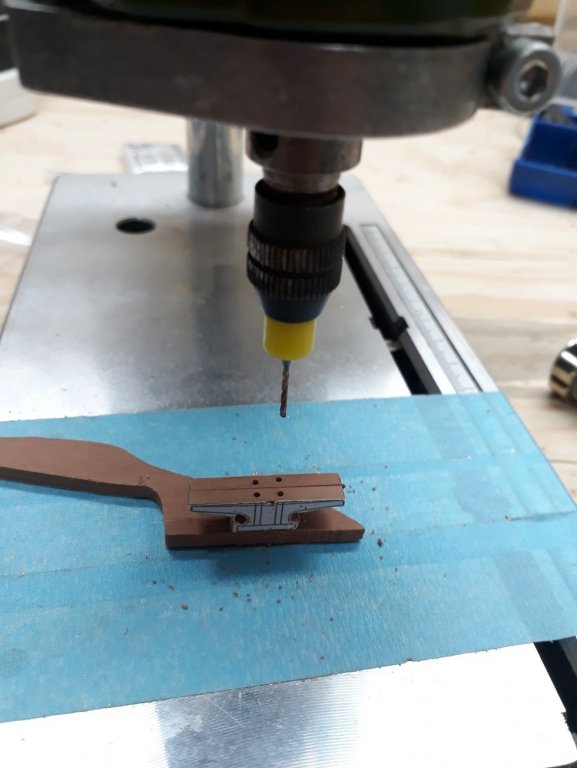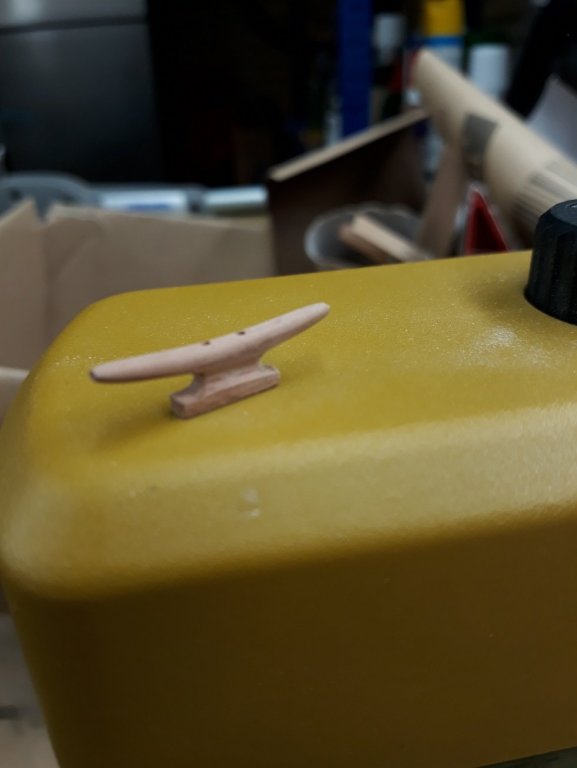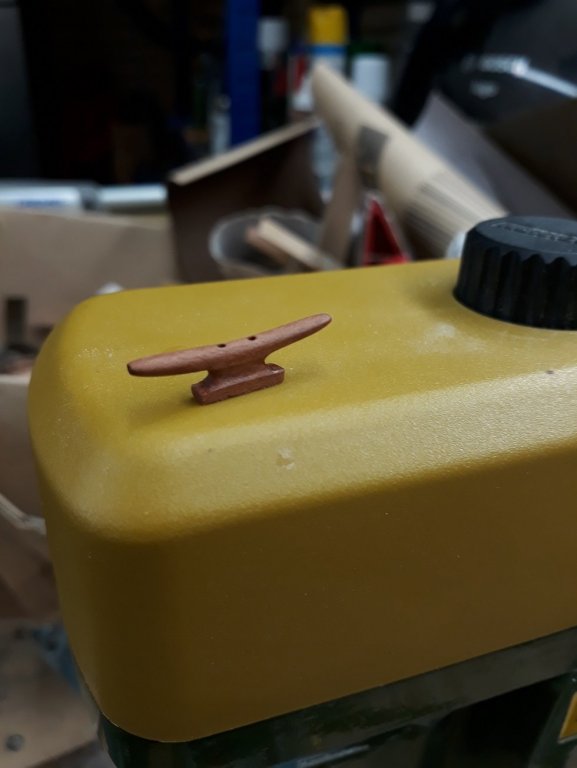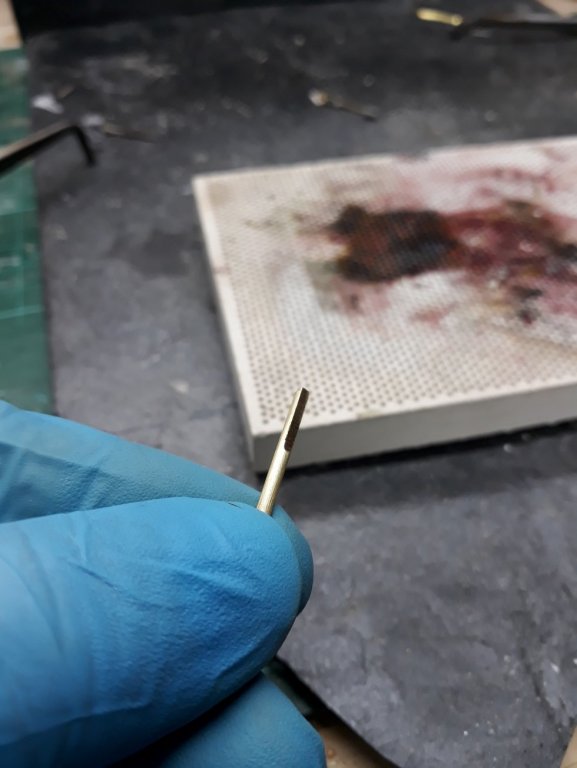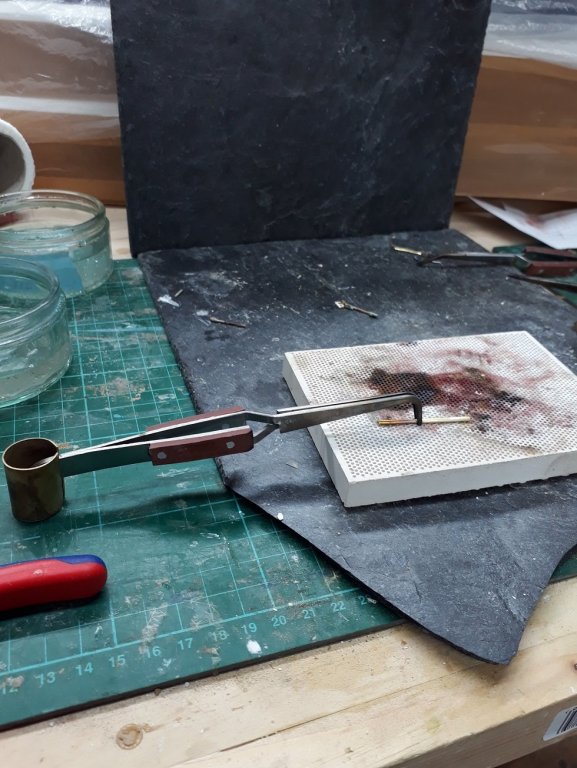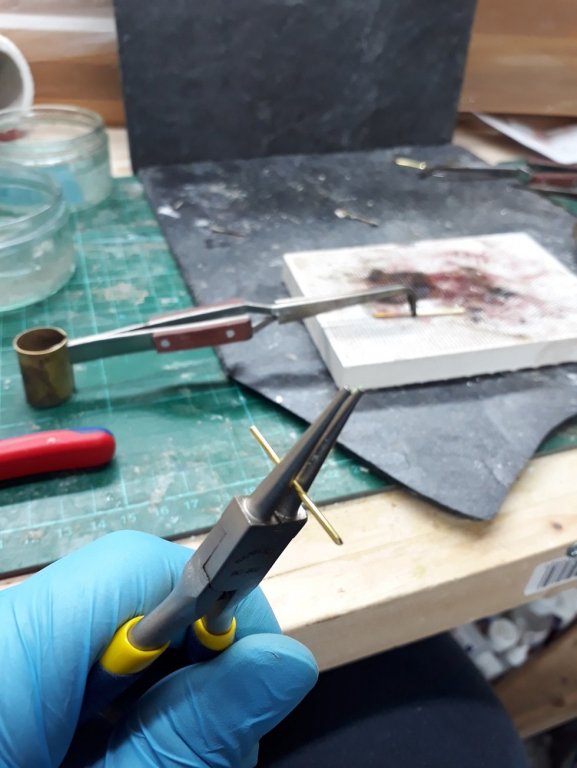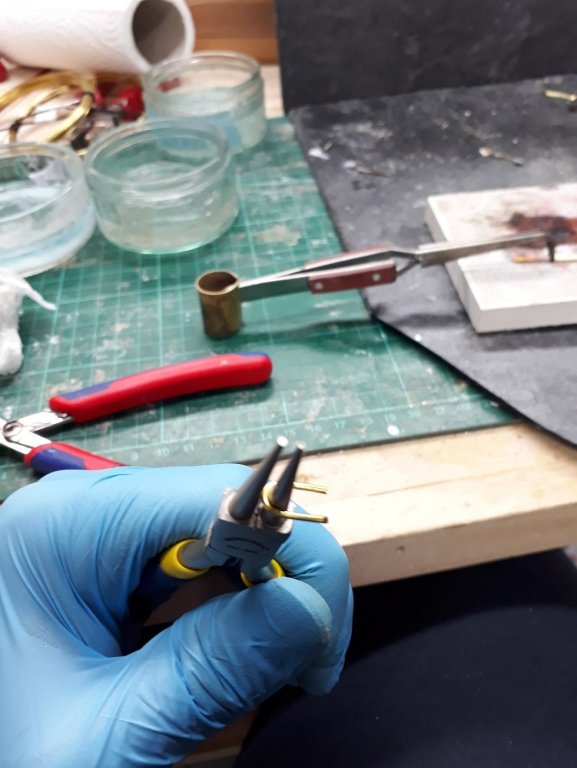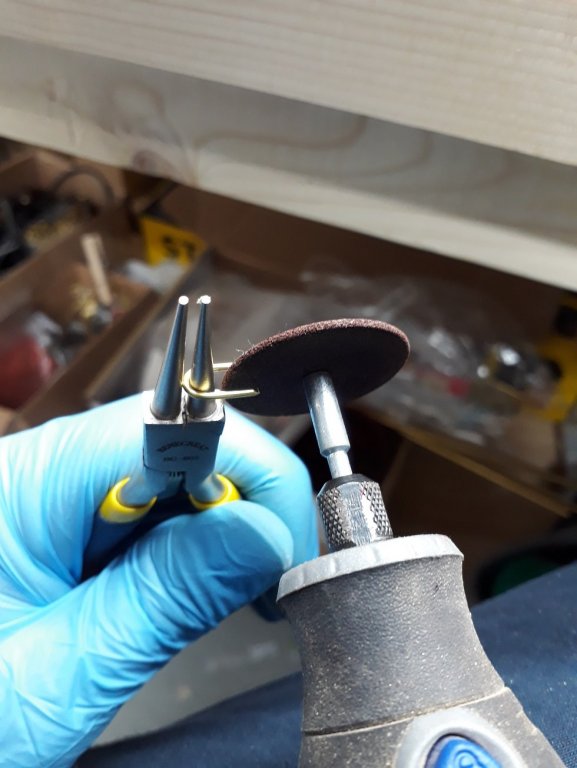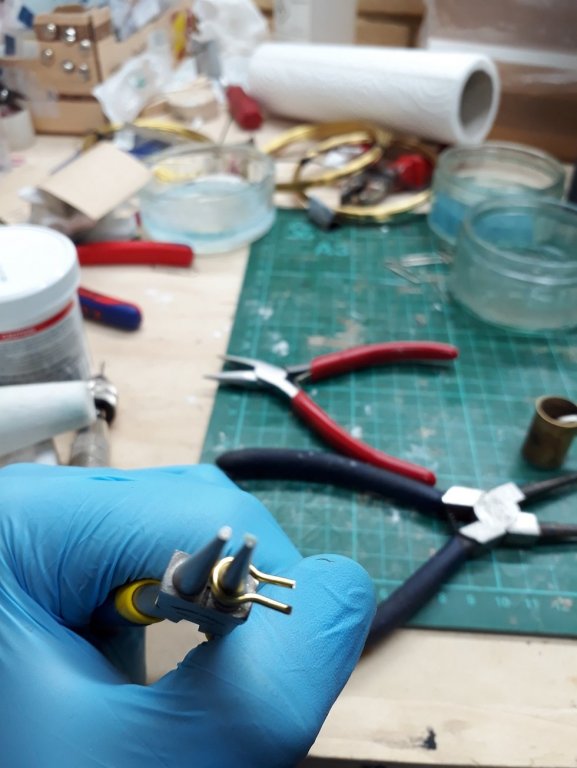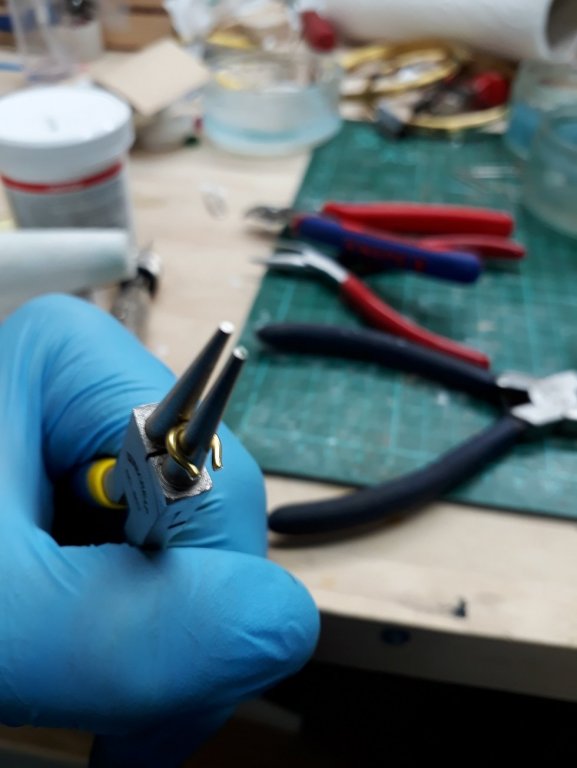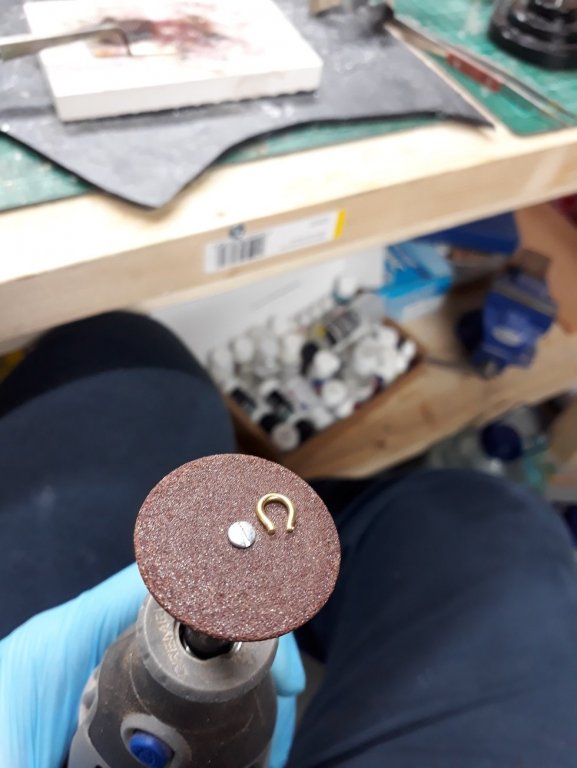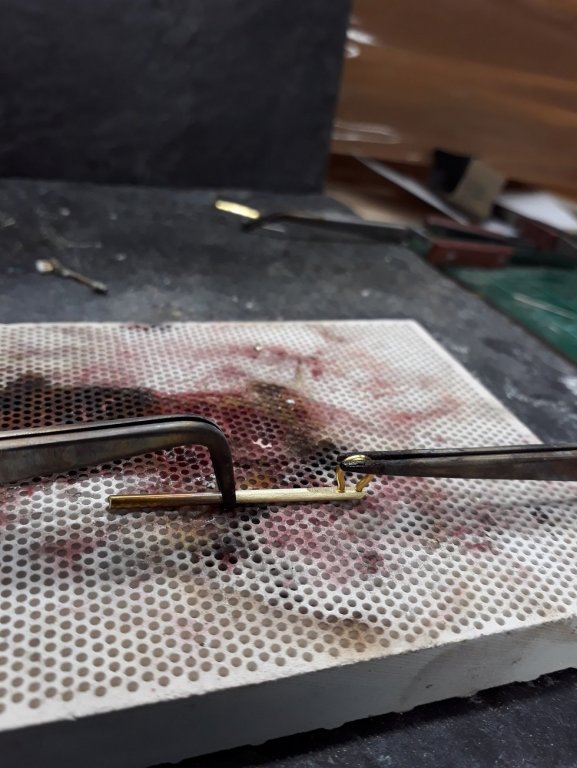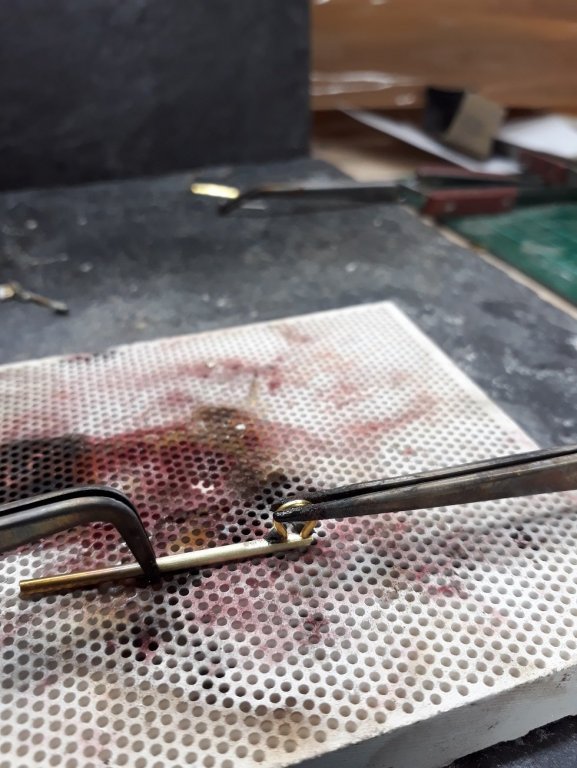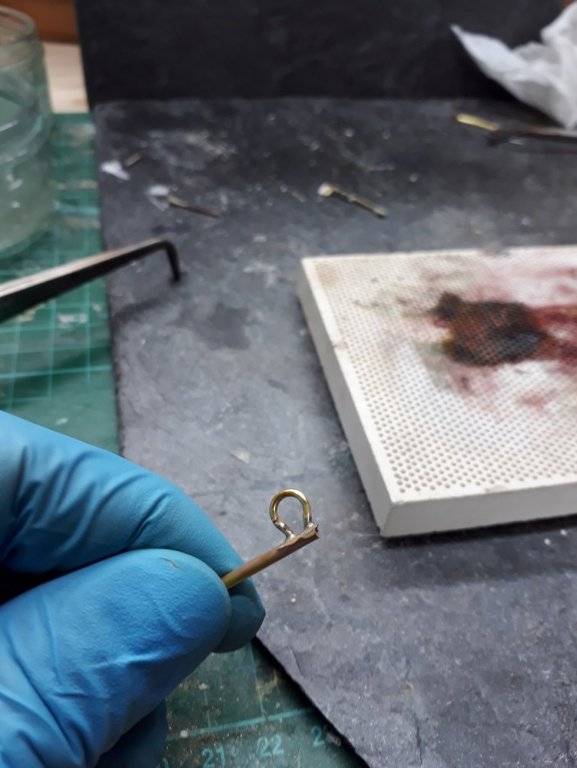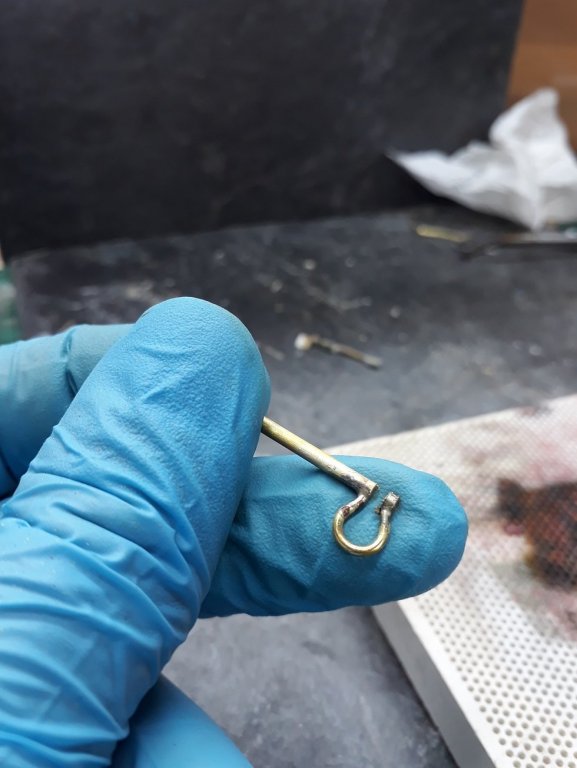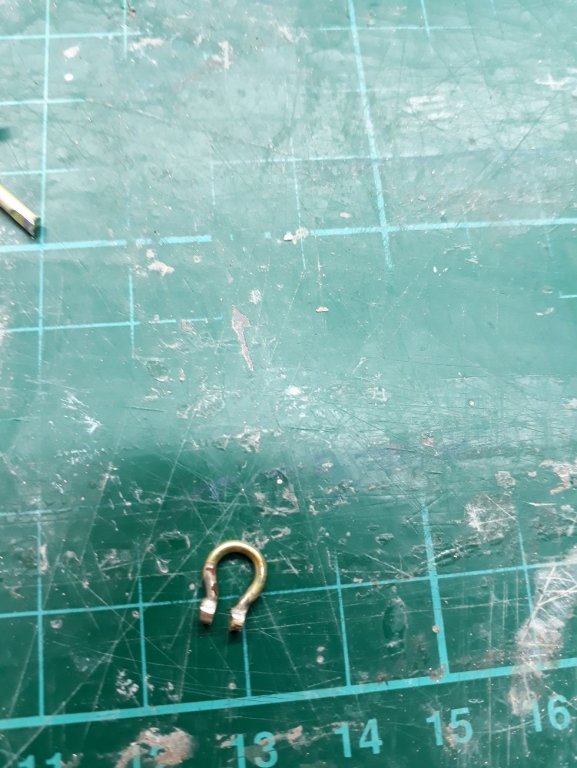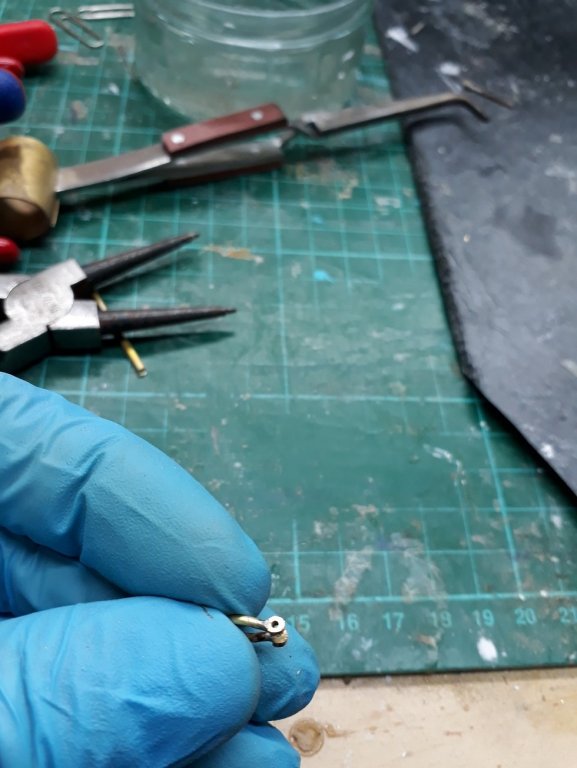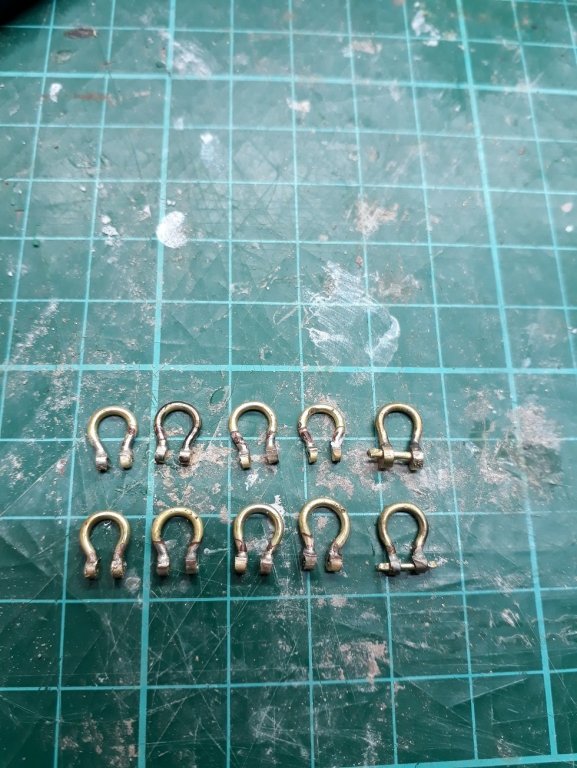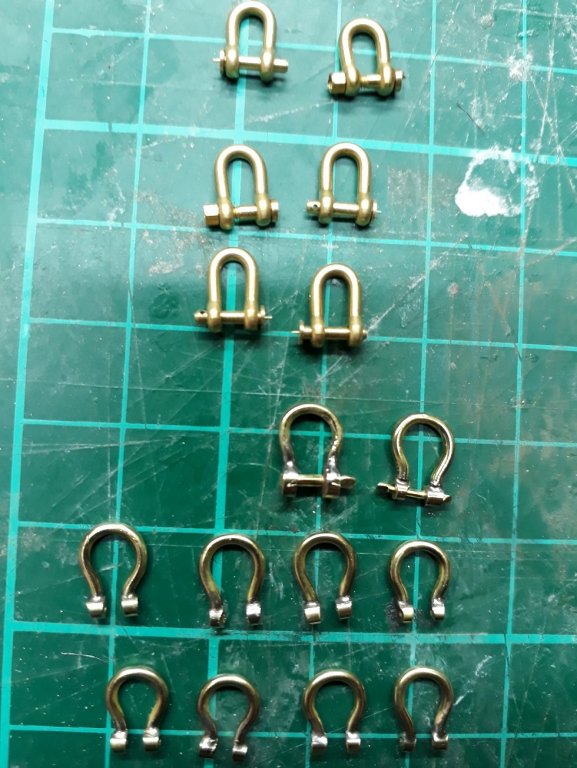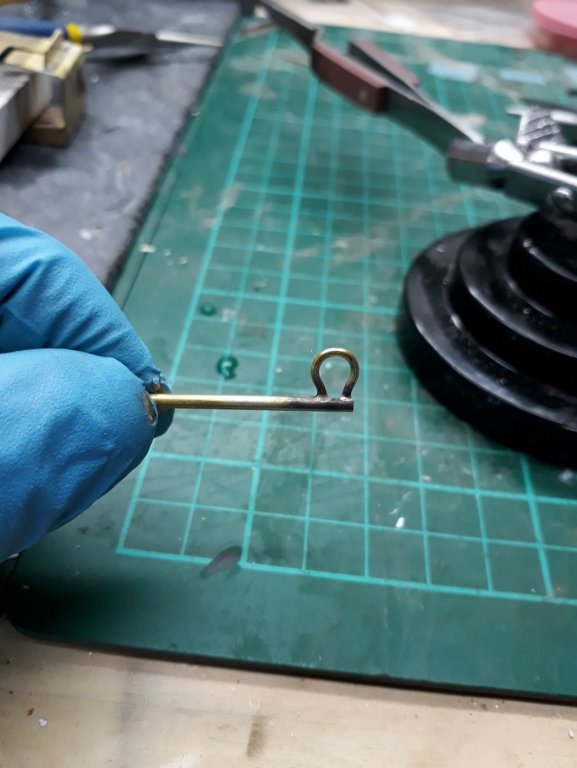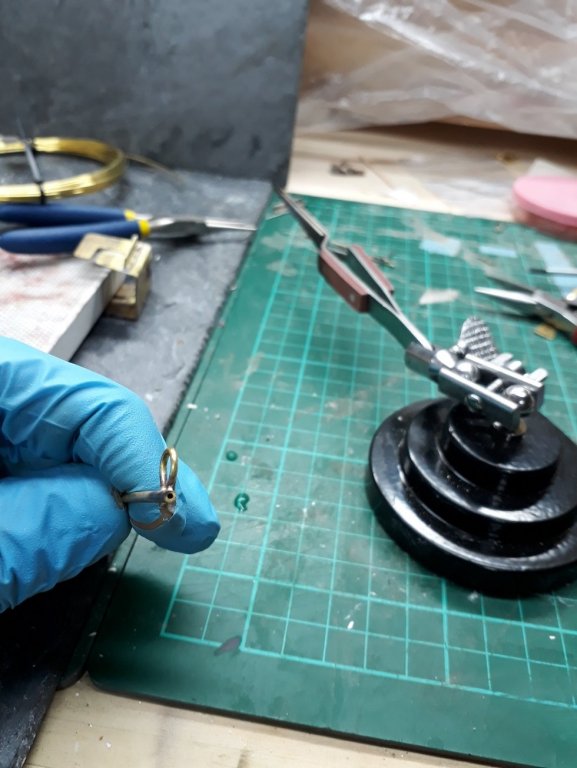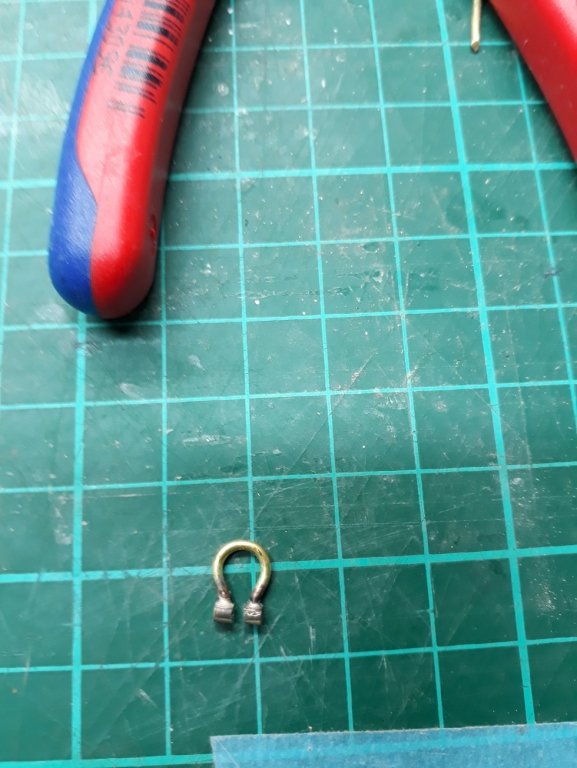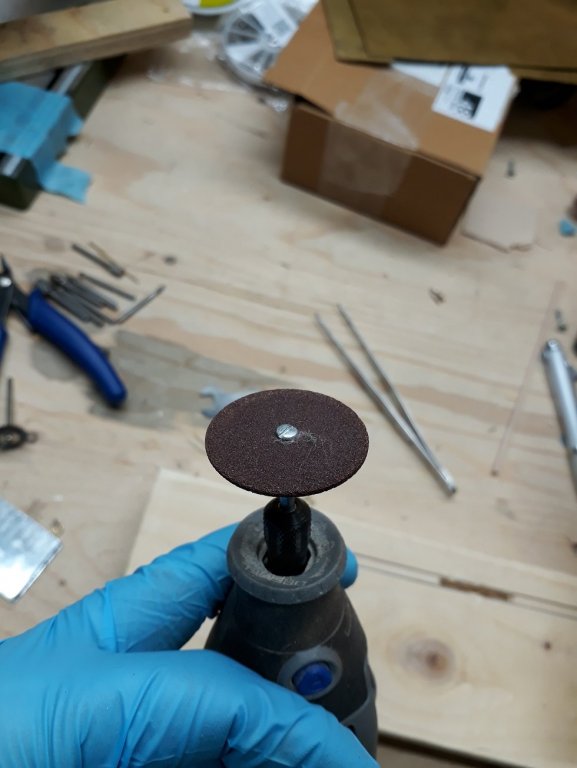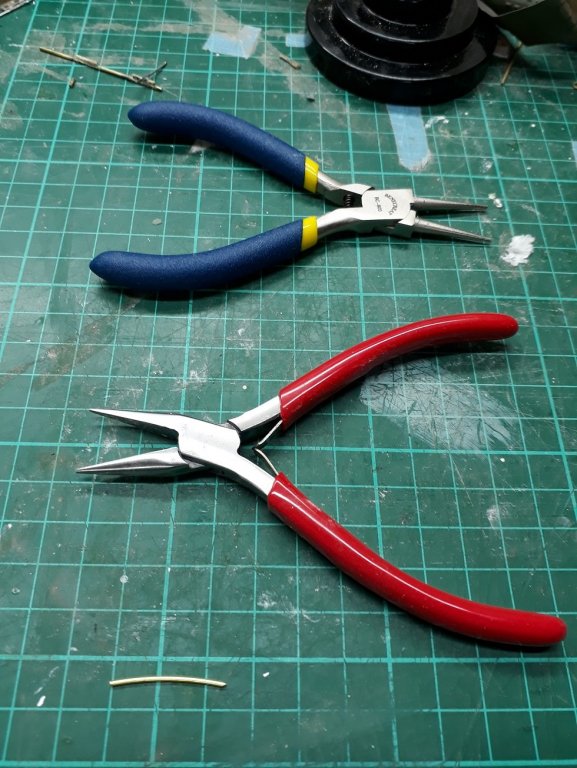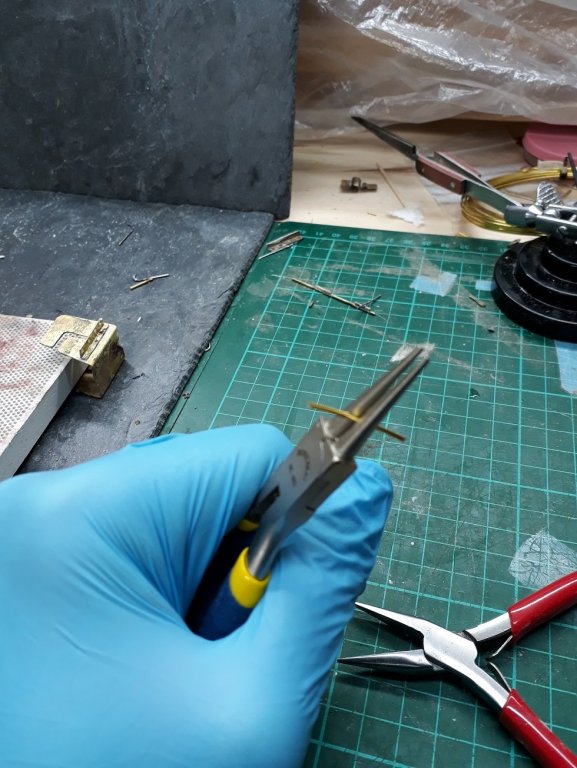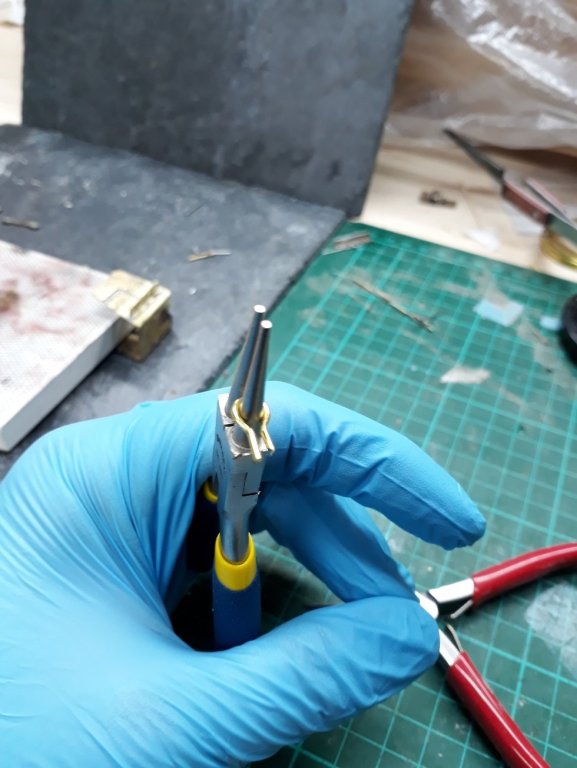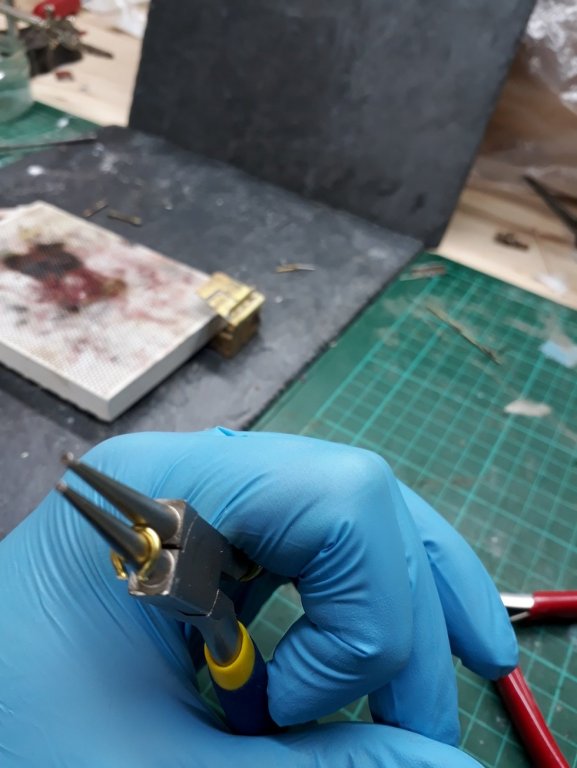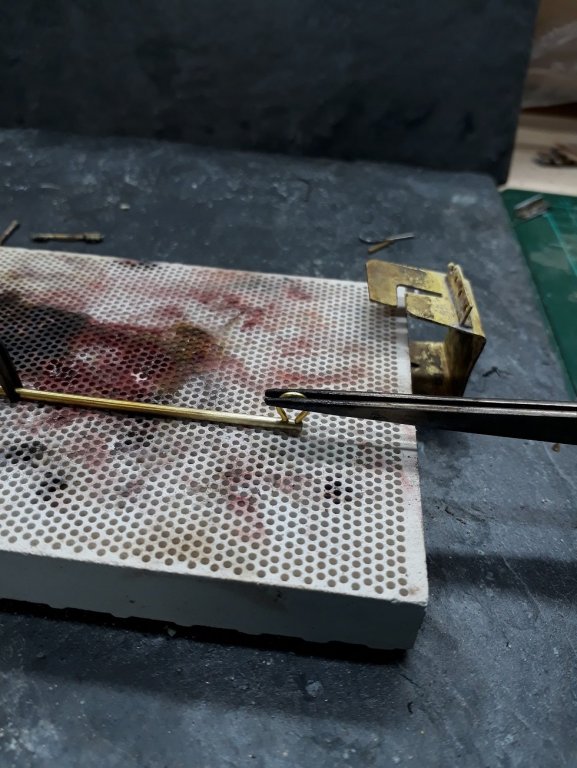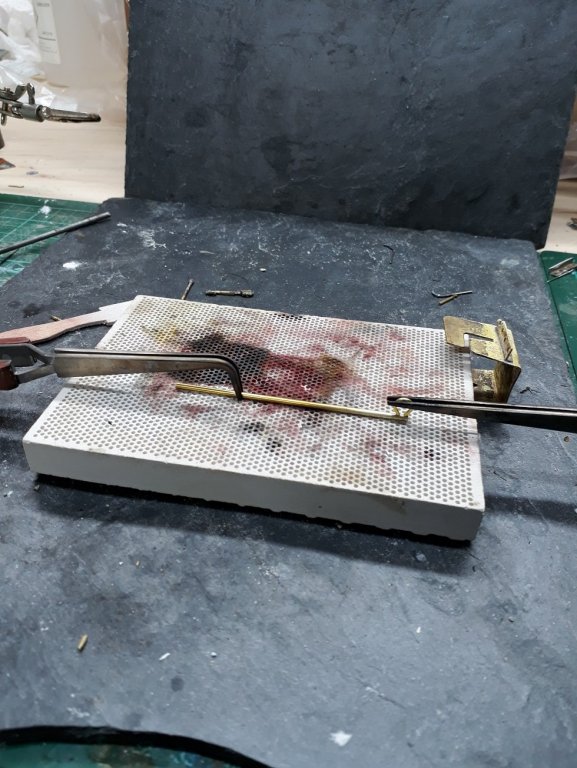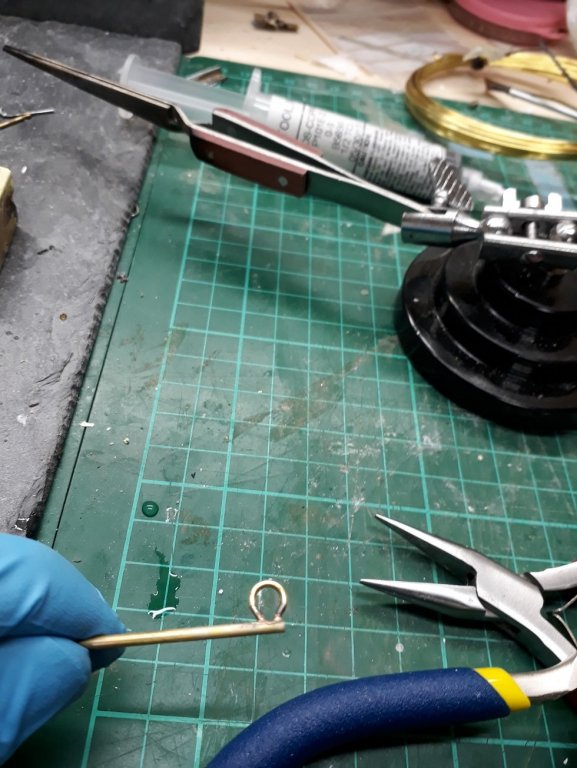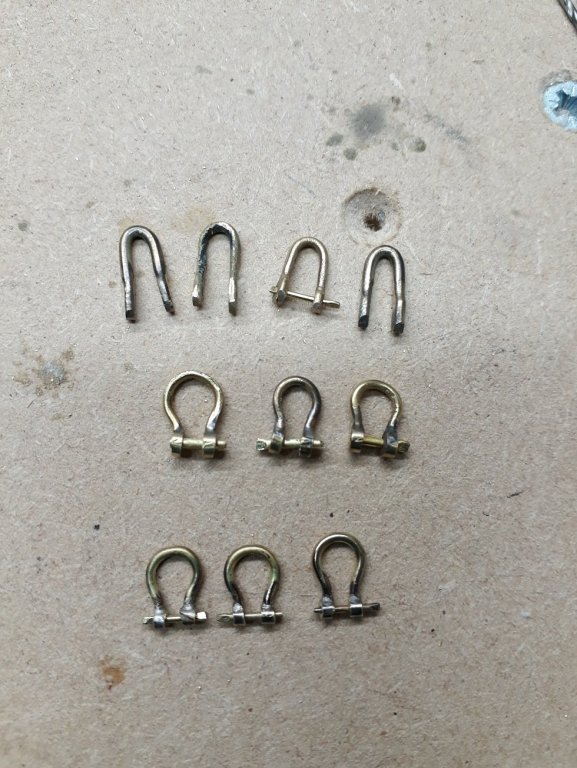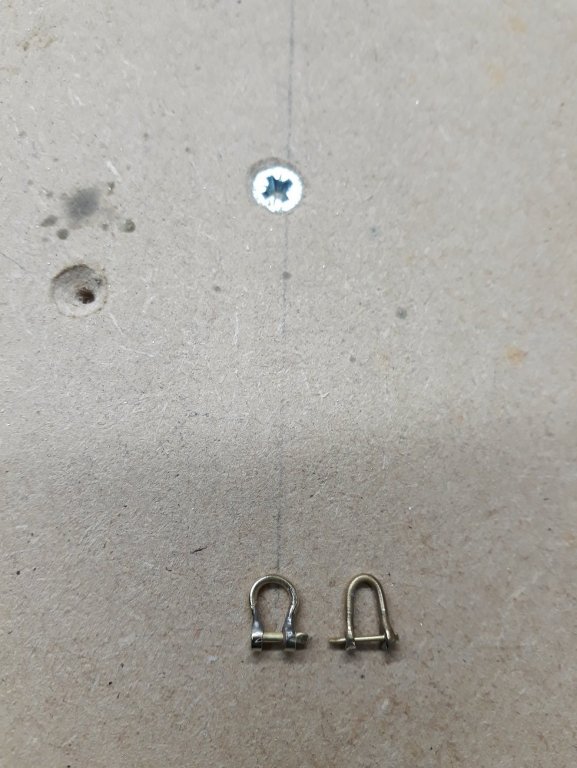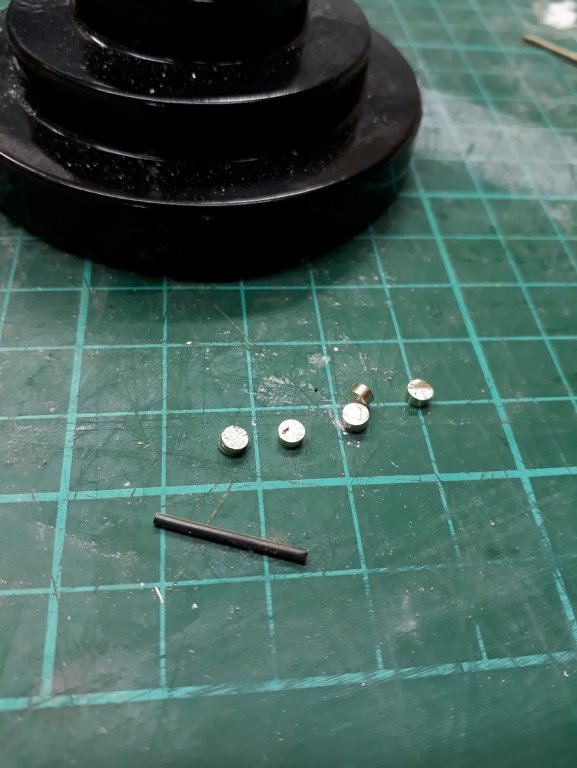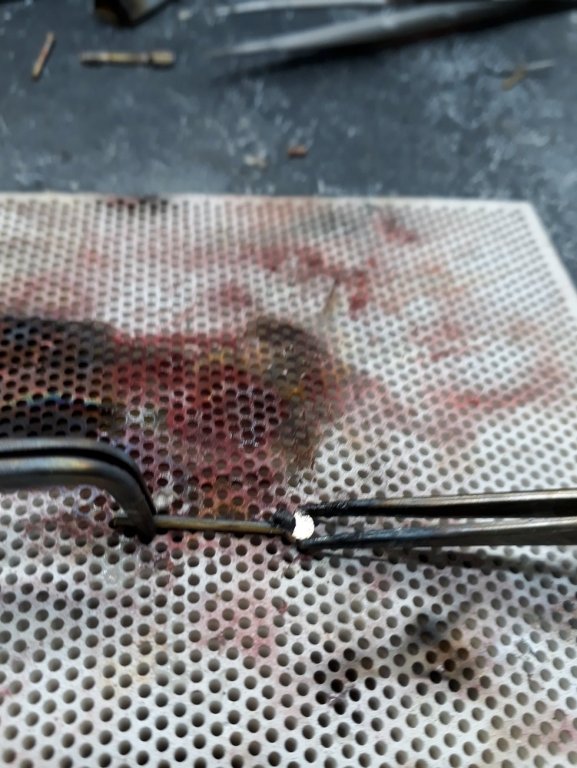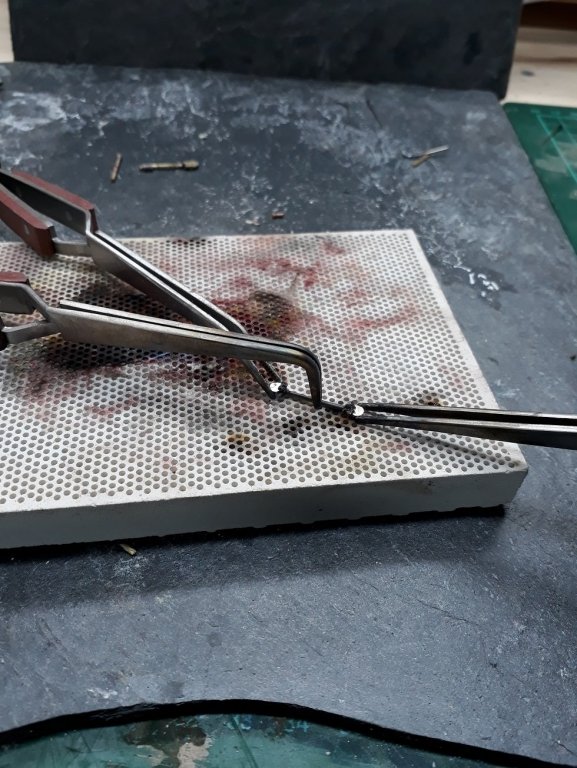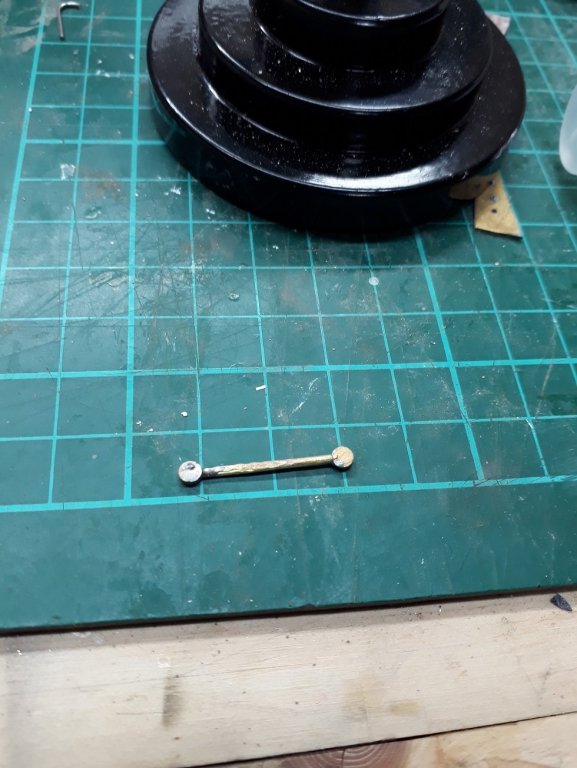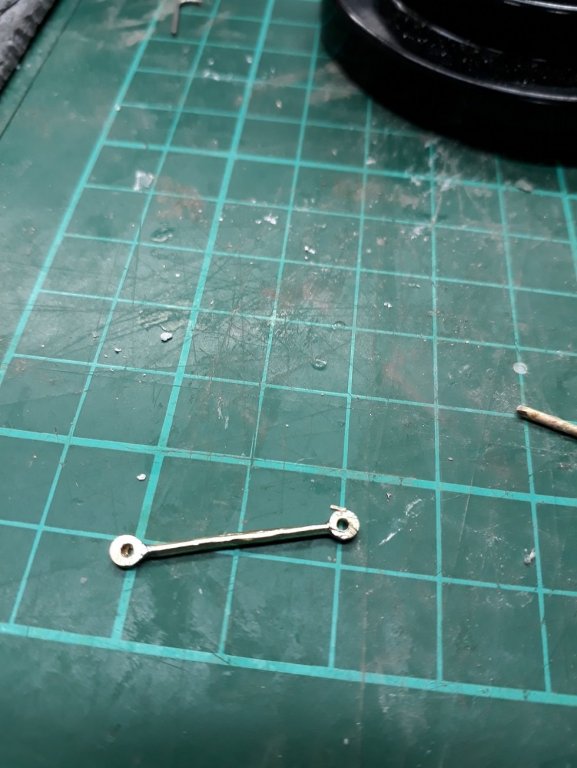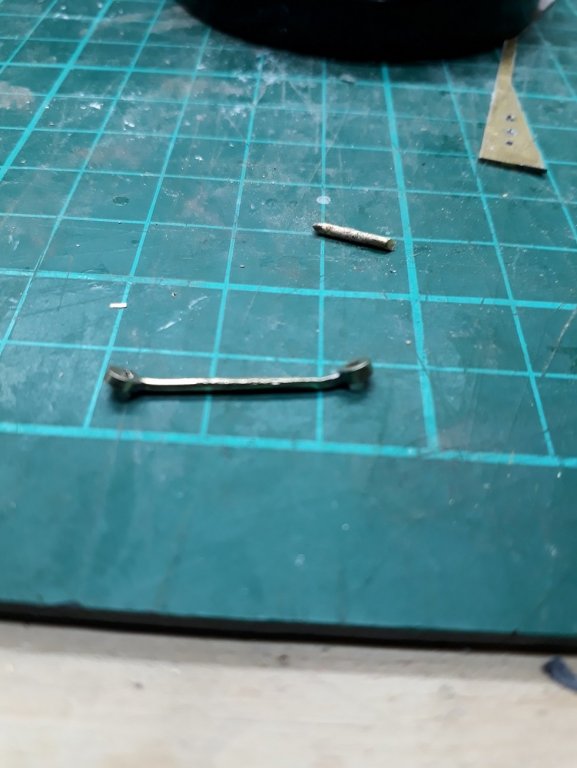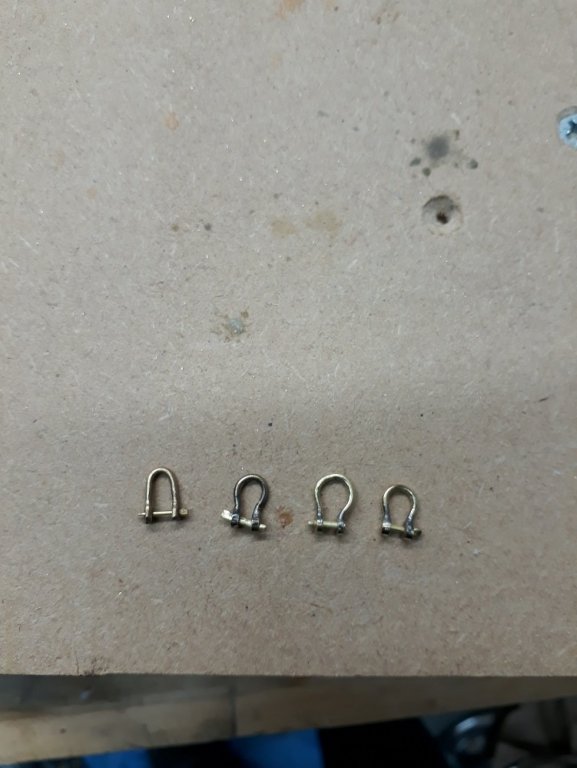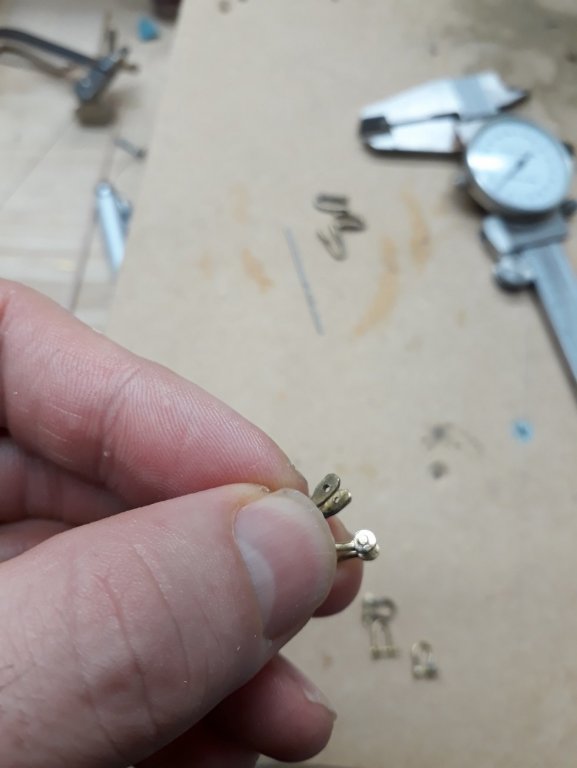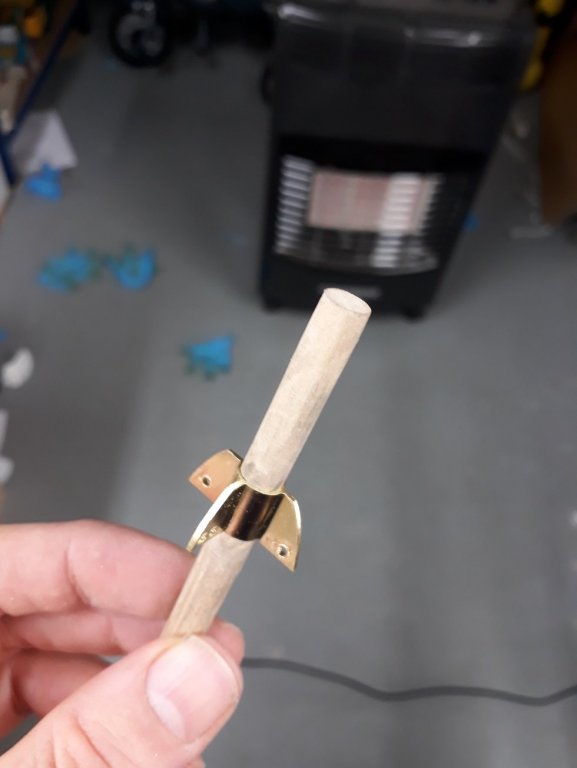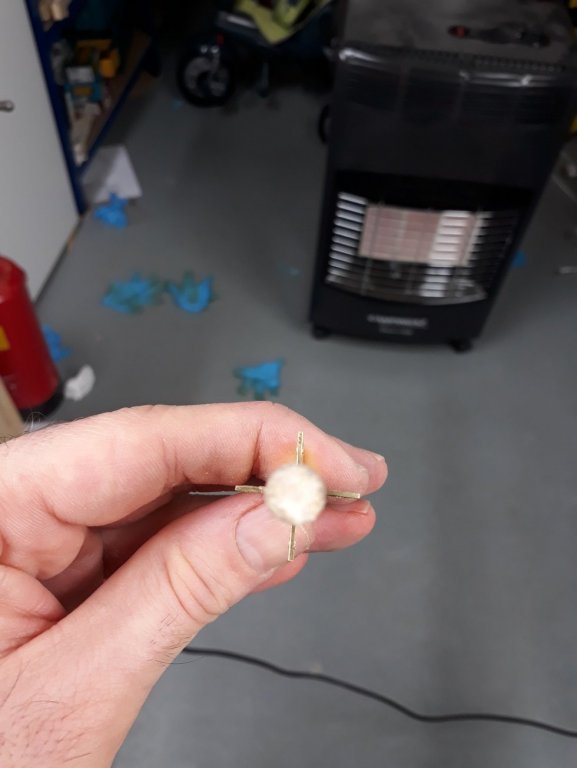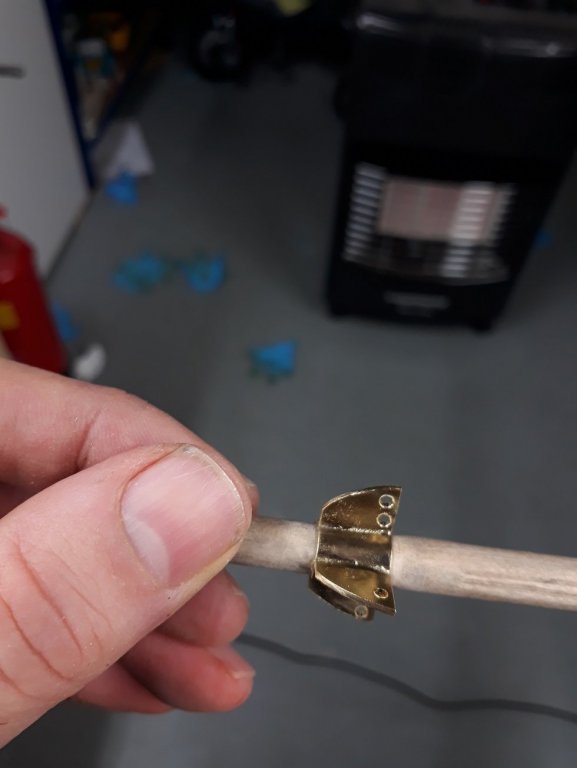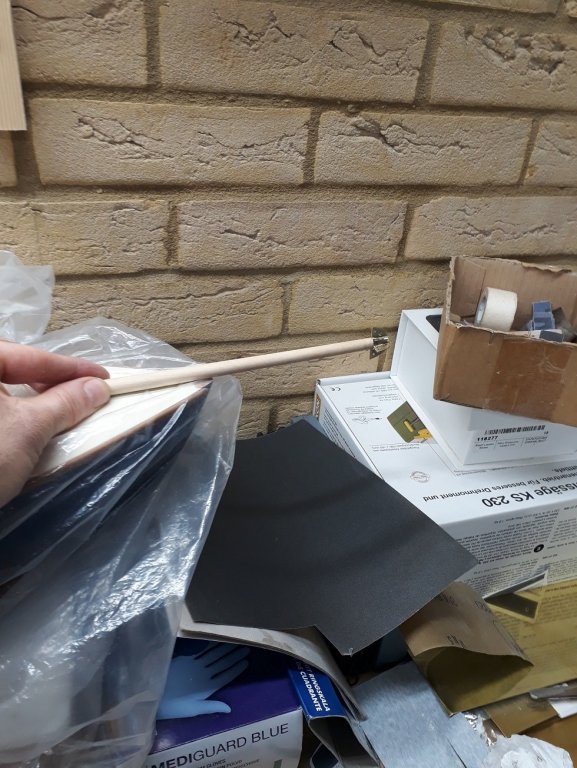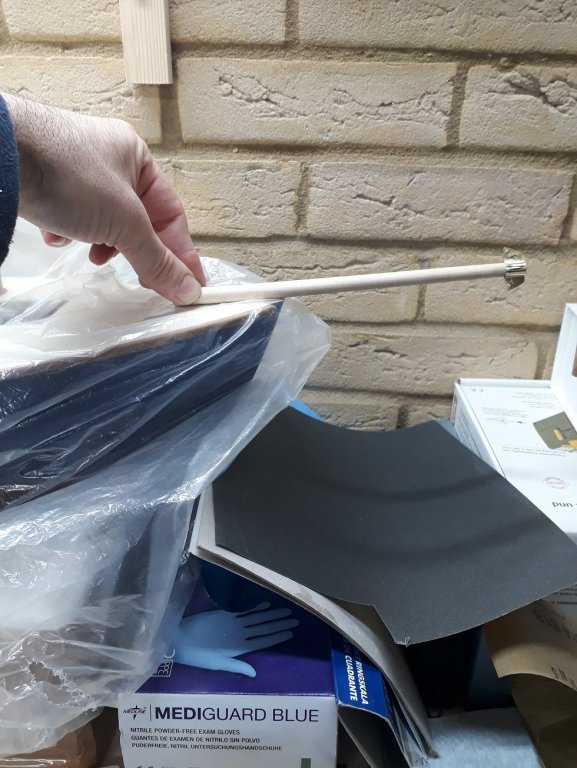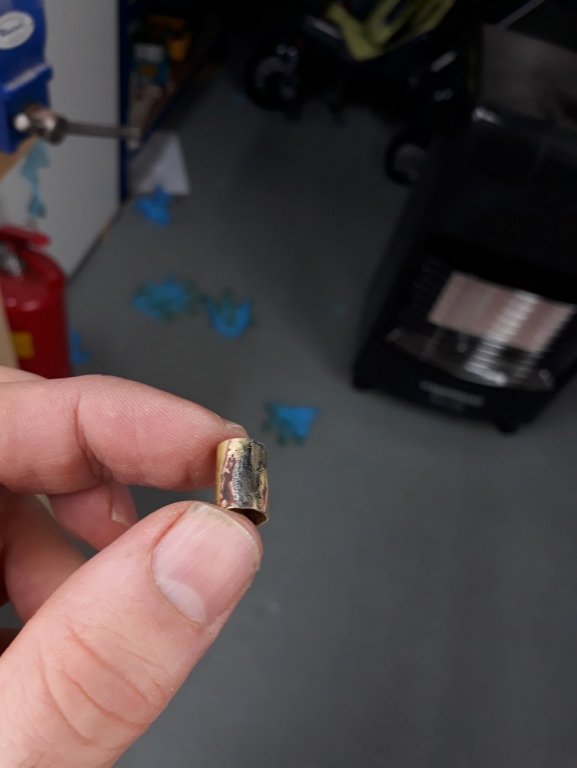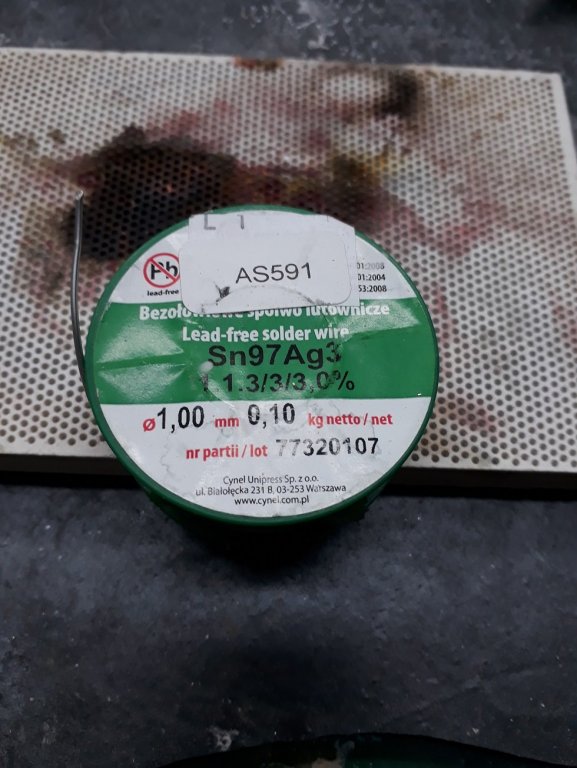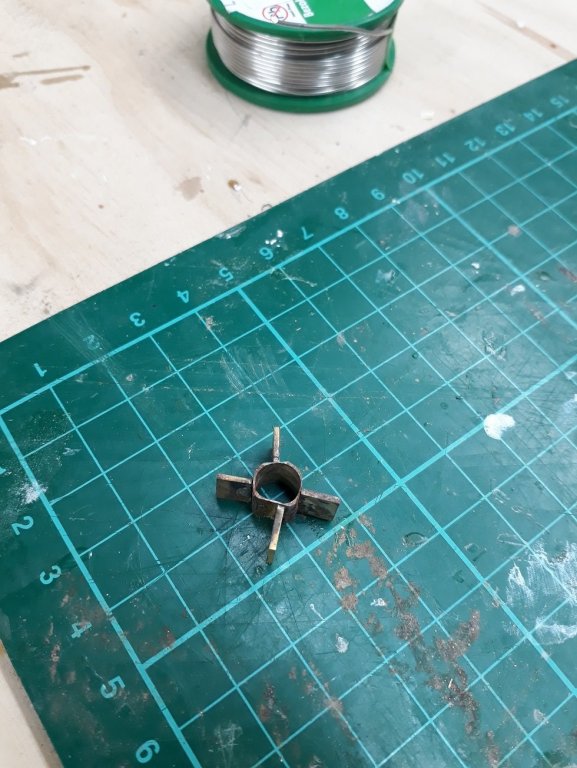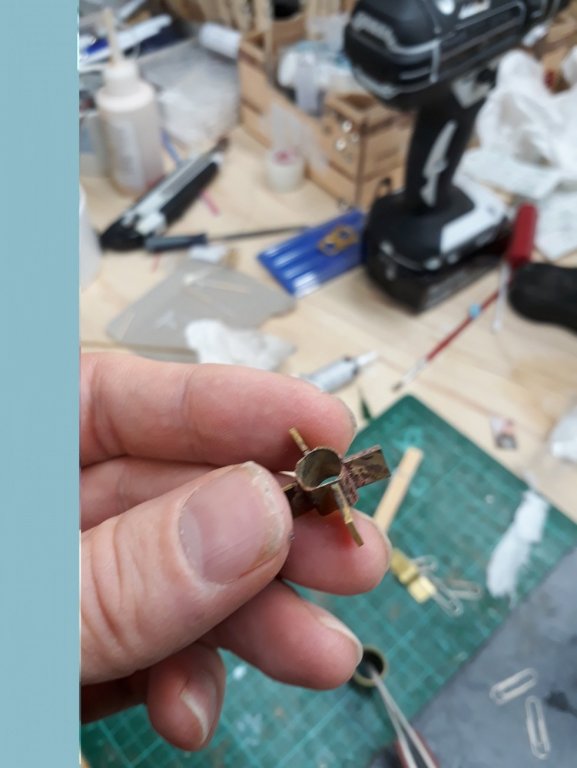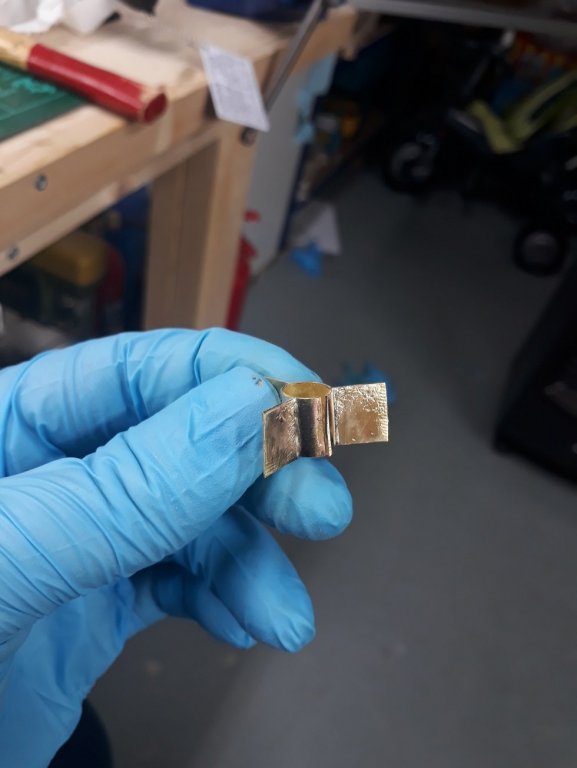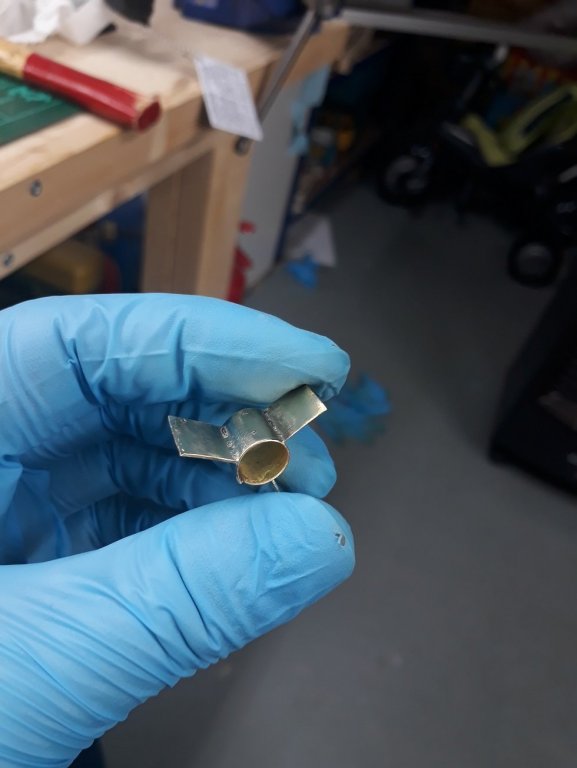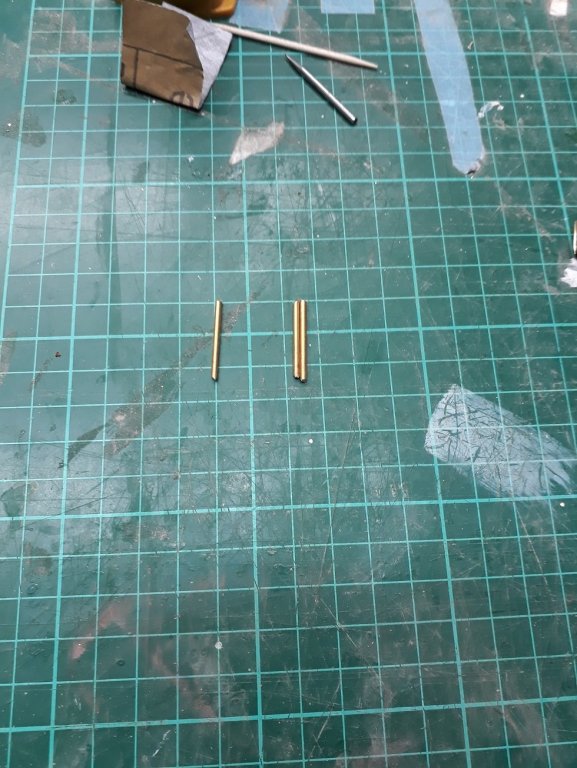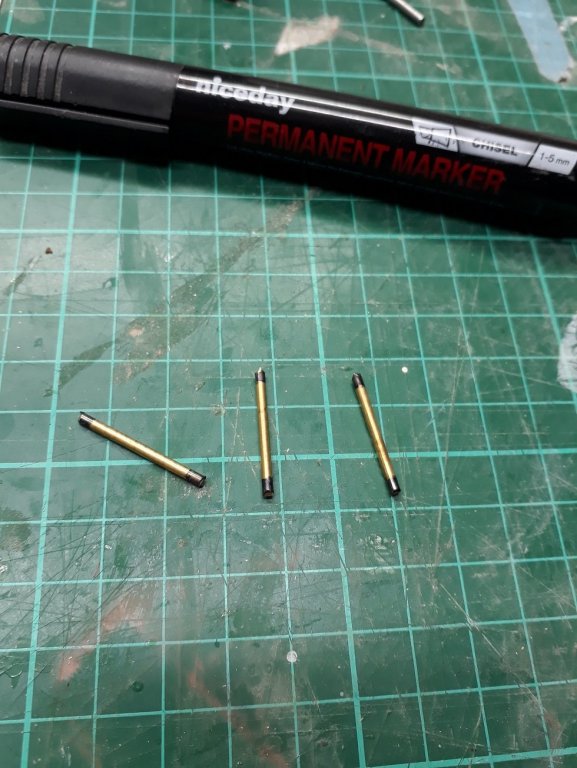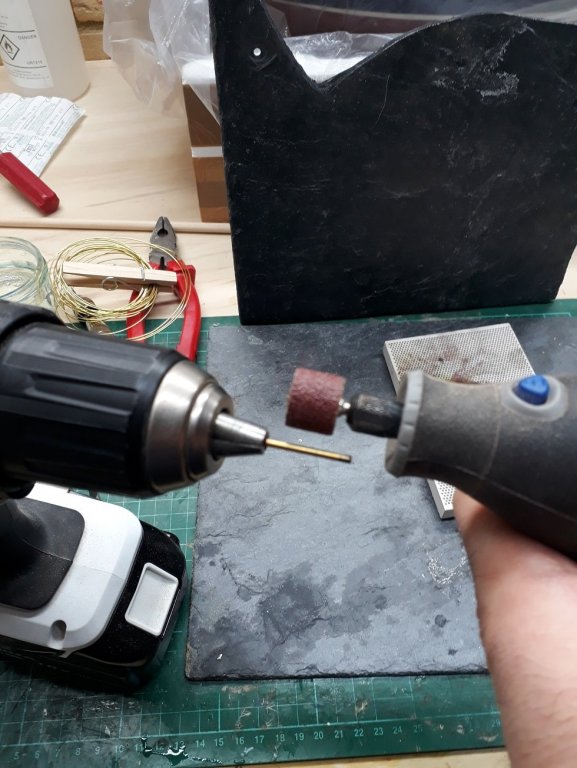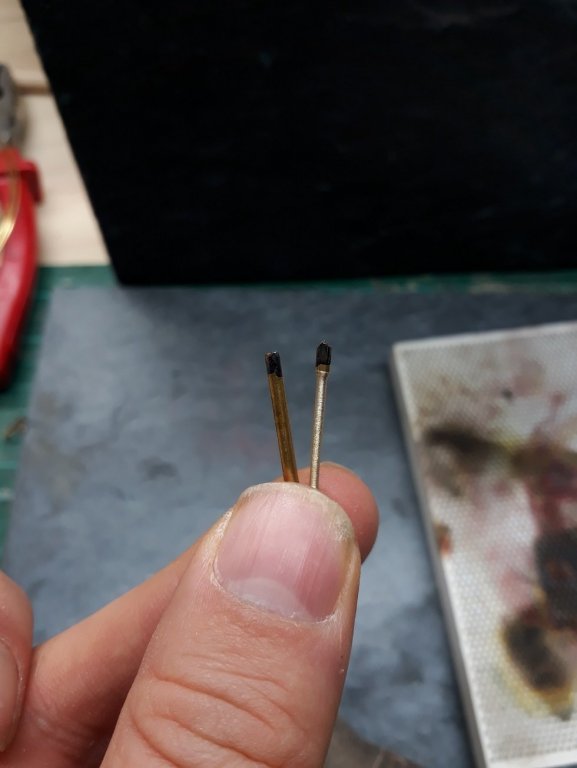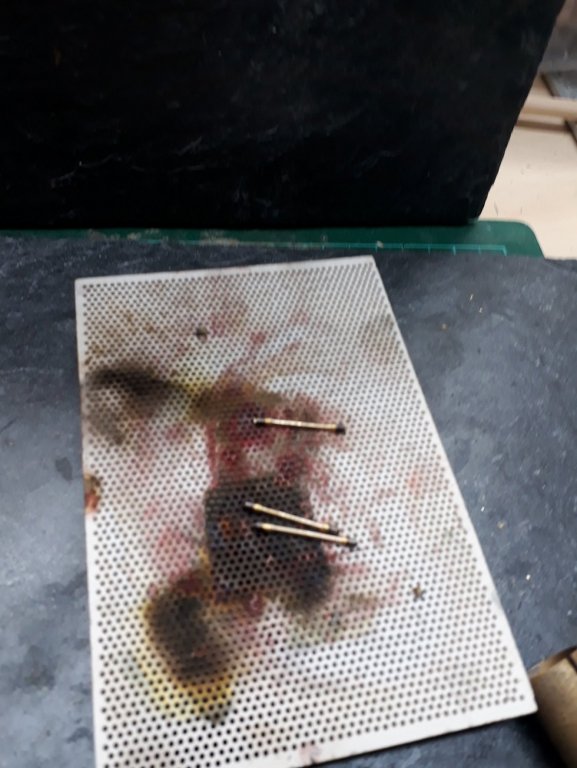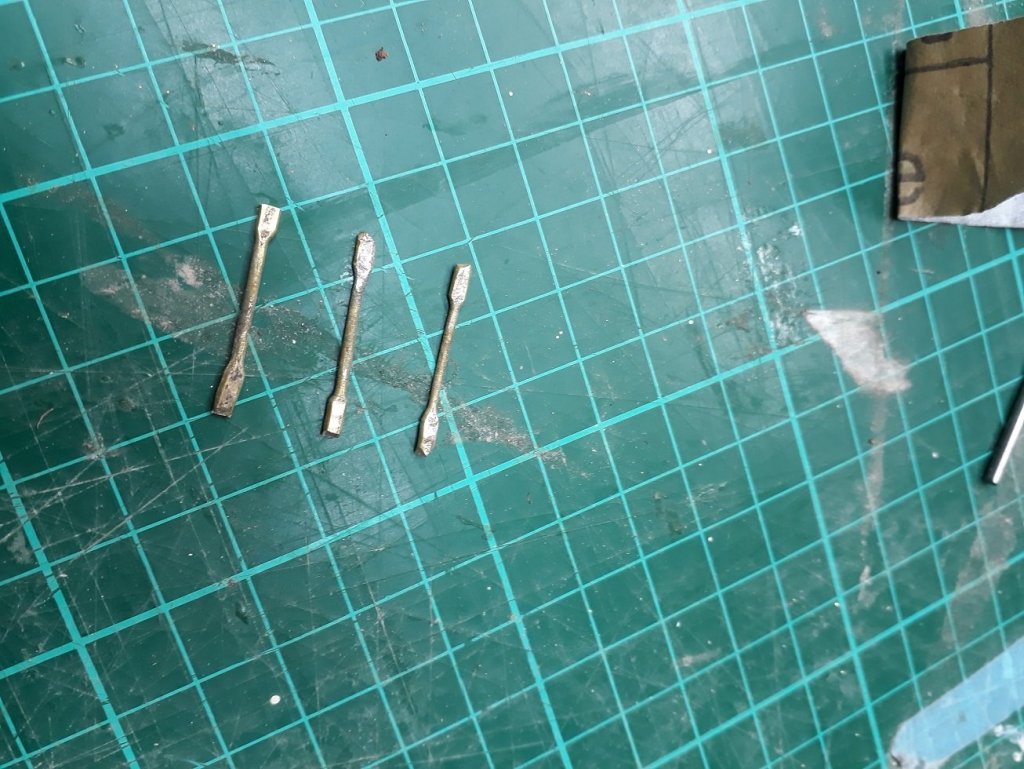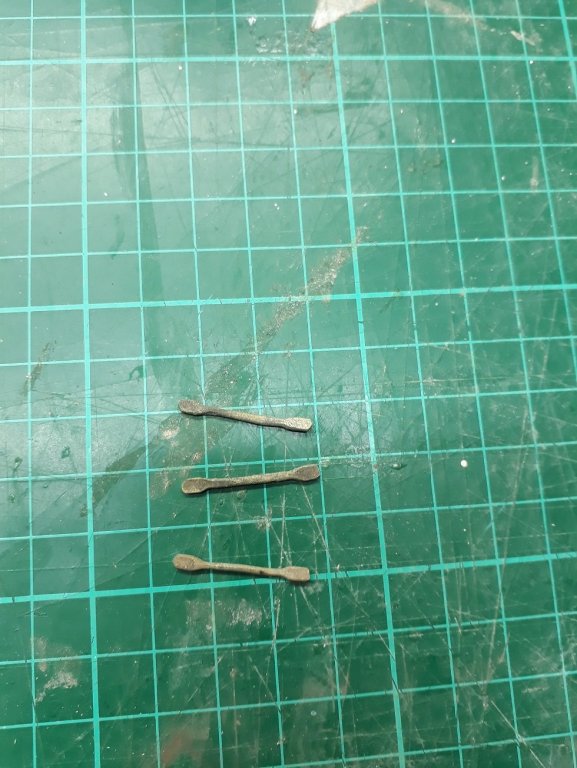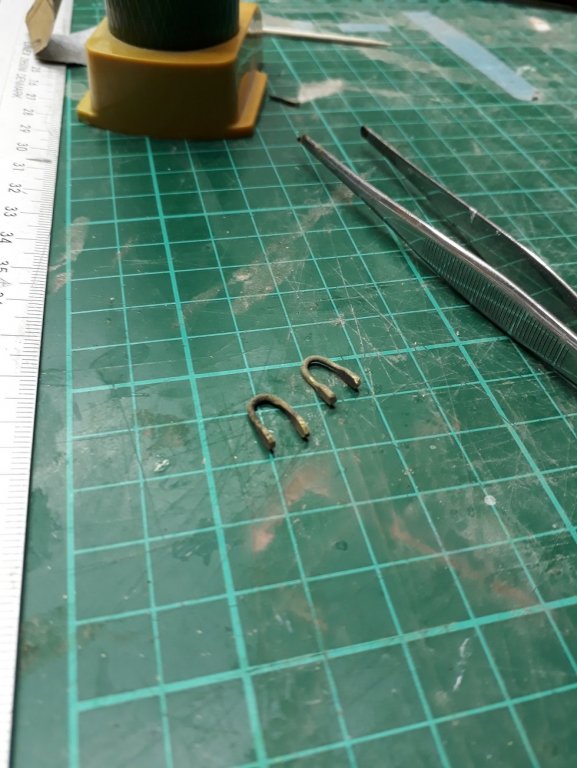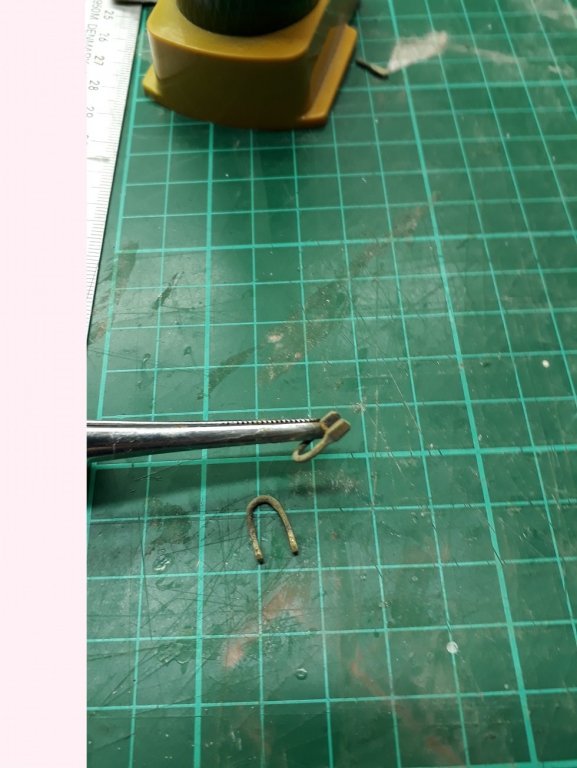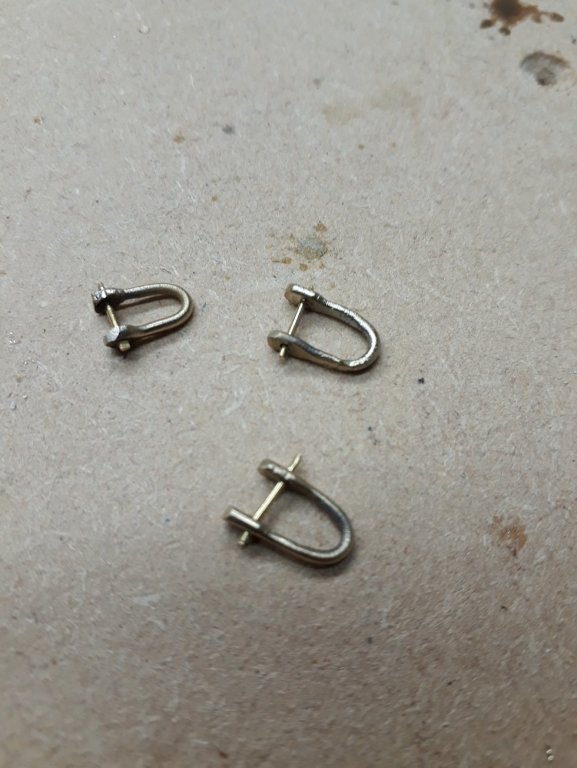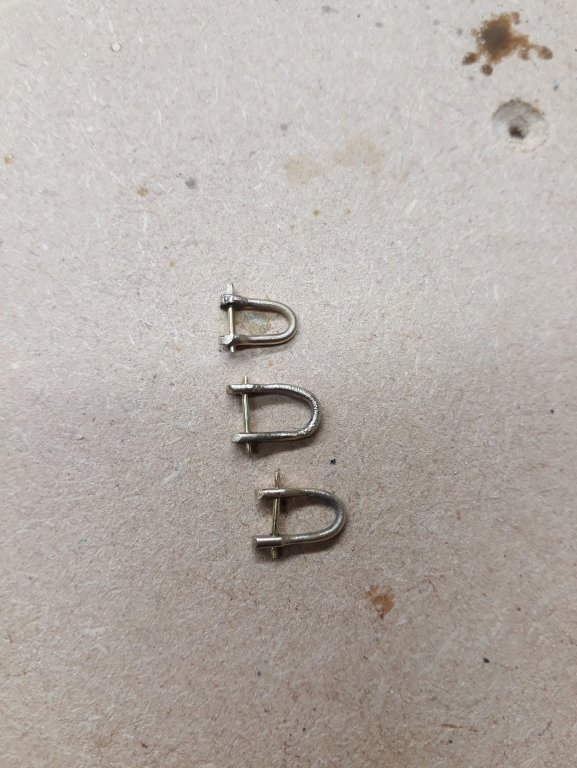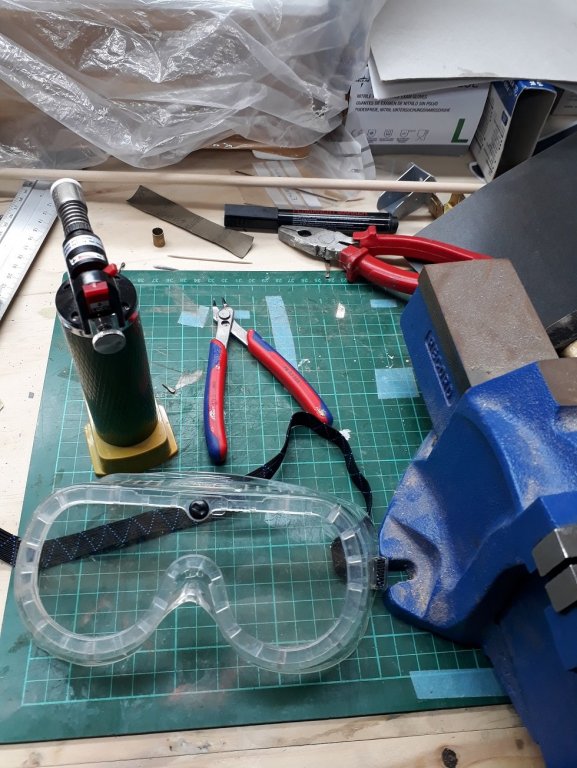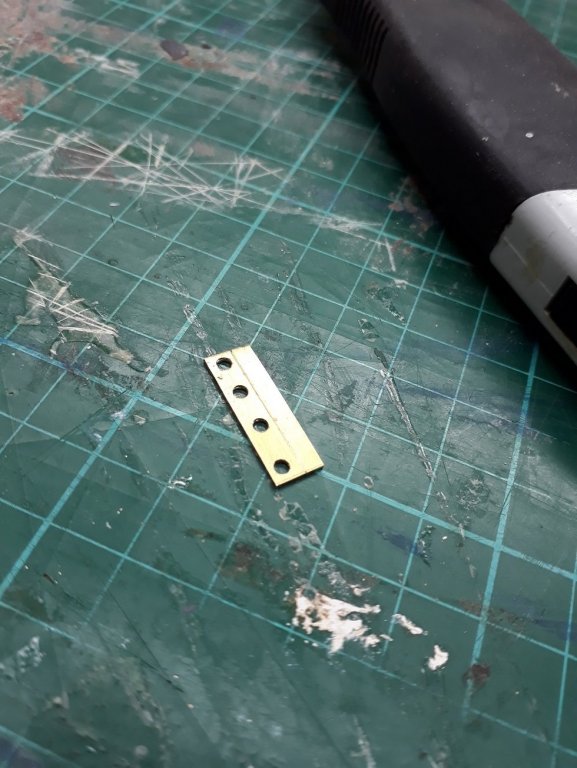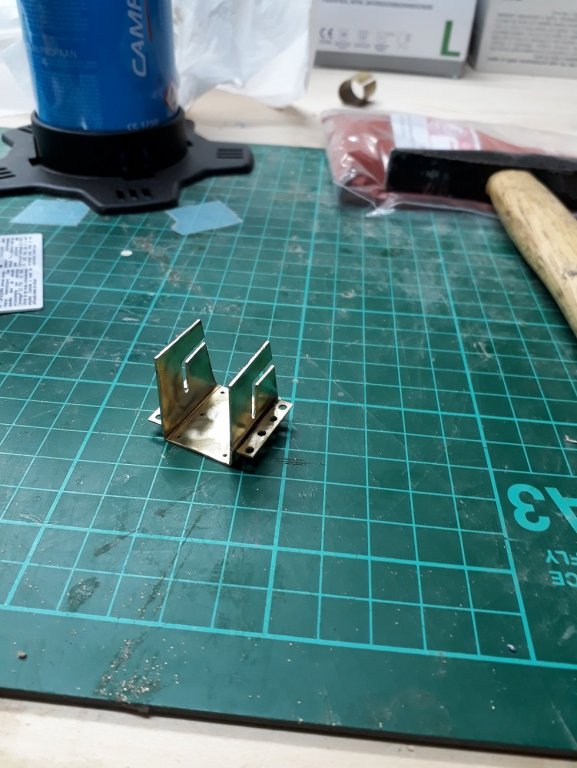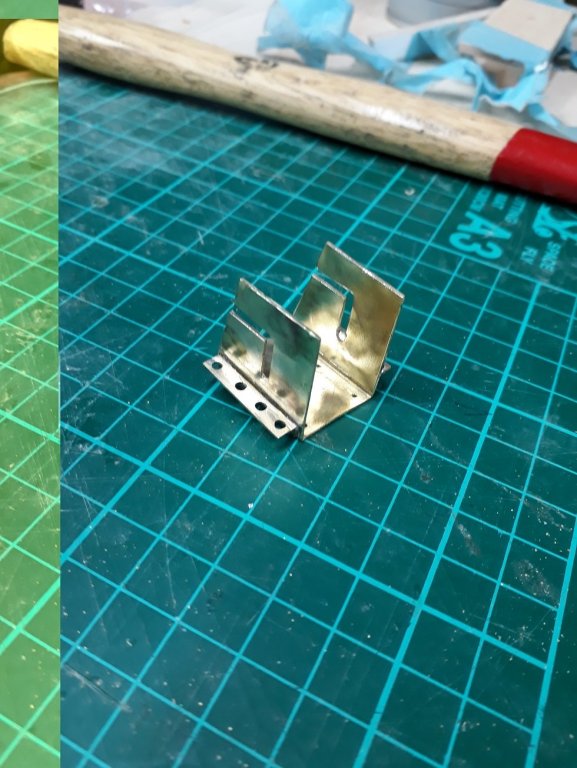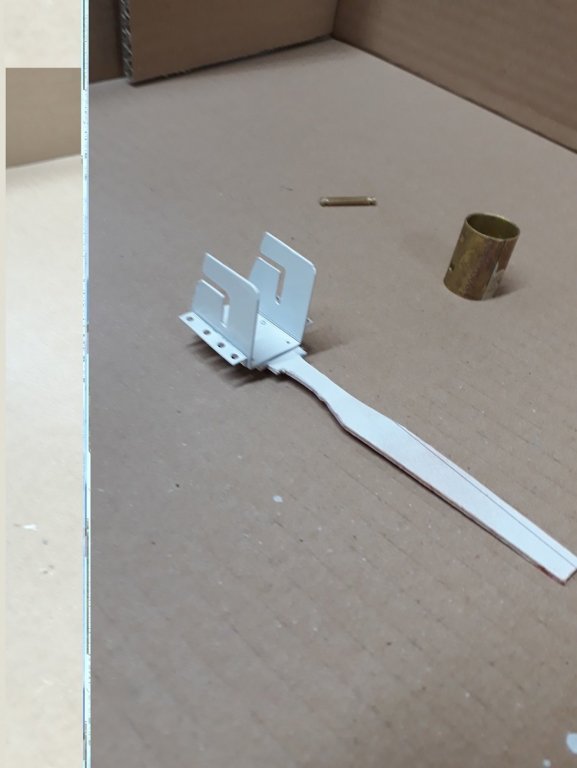-
Posts
1,601 -
Joined
-
Last visited
Content Type
Profiles
Forums
Gallery
Events
Everything posted by vaddoc
-
Pleasure! I made a cleat with this template, in the last two photos the cleat had a bit of tidying up sanding and a coat of Tung oil
-
Actually, it is nearing the time I will need cleats so I sat down today and did a bit of CAD. Maybe this template will help others. The printer settings can be used to scale up or down. The vertical lines are for through bolts/tree nails. cleats.pdf
-
.thumb.jpg.6fd4c1b78768bb3efd745ab810936005.jpg)
Another way to make shackles
vaddoc replied to vaddoc's topic in Metal Work, Soldering and Metal Fittings
You are right in both Welfack. It is of course much easier to make U shaped ones and indeed I ll need some later on but horse-shoe is a much more interesting shape! You are also correct about the rings and for the 1.2 mm wire, a 2.7 mm tube would be nearer real life dimensions but I do not have this odd size and the 3 mm looks a bit wrong. There is plenty of thickness to widen the hole to accept same size bolt but there is no real need as the bolt will be invisible on the boat. I intend though to make some smaller ones using 1mm or 0.8 mm wire and same 2 mm tube, this will be closer to real life dimensions. This is a good way of making shackles of any shape and size, quickly and consistently at a fraction of the price for bought ones. -
.thumb.jpg.6fd4c1b78768bb3efd745ab810936005.jpg)
Another way to make shackles
vaddoc replied to vaddoc's topic in Metal Work, Soldering and Metal Fittings
I ve standardised the the method and now it takes less than 10 min for each shackle. I ll post a few more pics: Clean the 2 mm tube and sand a flat and secure for soldering. Cut a piece of 1.2 mm wire, bend with fingers round the pliers Use second round pliers to bend into final shape in one step, using something appropriate to maintain gap Trim the excess and sand flat the ends by touching on the disc Secure for soldering, use a tiny amount of paste Cool, then use the disc to cut free and shape the shackle The shackles come out very consistent in shape and size. These have not been polished yet After a bath in acid and polishing, I think they look great. This is how they compare with the bought ones (expensive) Smaller sizes can easily be made and much smaller brass tubes are available as welding supplies. -
Welcome Mark! Indeed consider starting a log, very rewarding.
-
Hand brushing is a good alternative, quite satisfying as well! I have only basic painting skills and do not want to use an airbrush. I have had excellent results with hand brushing using Valejo colours following these rules: 1. Use very good brushes, with appropriate width for the job 2. Thin the paint (should be runny but not like water), avoid heavy coats. 3. For Valejo, use the hand brushing thinner, different and better than the air brush thinner. It congeals if left so must have resin in it (this is what valejo claims so not easily reproduced at home). Get the 60 ml bottle, it is not expensive. 4. Use a bit of retarder. 5. Start from dry and end on wet. Take your time, you can go over the area 2-3 times. Avoid puddles at the edges. 6. Trust the paint! Do not go over again to "correct" or smooth out brush marks. They will disappear. You ll probably need a dozen or more coats either way. 7. Best to seal the wood, I use a water based wood sealer sanded to 400 grit 8. I use plastic pots with caps that seal pretty well and are cheap. The paint stays wet for months. 9. Use only frog tape or Tamiya tape or equivalent. The paint will bleed under ordinary masking tape or electricians tape. 10. Acrylic paint is not tough so needs to be protected with varnish or some topcoat Hopefully these will be of help to some. May not work for all but I was able to paint my 80 cm hull with almost no brush marks. Vaddoc
-
.thumb.jpg.6fd4c1b78768bb3efd745ab810936005.jpg)
Another way to make shackles
vaddoc replied to vaddoc's topic in Metal Work, Soldering and Metal Fittings
It's a type of ceramic, google honeycomb soldering block, it is very cheap and works well. -
.thumb.jpg.6fd4c1b78768bb3efd745ab810936005.jpg)
Another way to make shackles
vaddoc replied to vaddoc's topic in Metal Work, Soldering and Metal Fittings
Ok, I think I concluded on a quick and easy way to make shackles, at least in large sale. Very similar to the one Tony used. Here it goes: Get some 2 mm brass pipe (has a hole around 0.8 mm) and also some needle pliers. Take a length of 1.2 mm brass wire, about 2 cm. No need to straighten or anneal. Hold it at an appropriate position and bend it to shape. A second pair of flat pliers is very useful Trim the ends and touch to the disc sander to make sure they are flat Now silver solder on to the pipe. It helps if the surface of the pipe is sanded a bit flat. A tiny amount of paste is needed The result in two consecutive shackles Now, using the brown dremel wheel cut the pipe to form the shackle, trim the ends as needed. Use a wire brush to polish the brass. A short piece of 0.8 mm wire with crushed ends finishes the shackle. The bottom shackles in the next photo are made with this method, I think they are the best and most consistent. This is a quick, cheap and easy method, it needs quite a few tools but nothing too exotic. Regards Vaddoc -
.thumb.jpg.6fd4c1b78768bb3efd745ab810936005.jpg)
Straightening thin brass wire
vaddoc replied to vossy's topic in Metal Work, Soldering and Metal Fittings
Indeed, this is how I straighten brass wire. I first anneal the wire and then roll it between two thick pieces of very flat MDF. Works perfectly every time but only if the wire is annealed first. -
Use a hard dense wood, cut a pattern, define the lines with files, finish with sandpaper up to 400 grit, apply tung oil. I made all the cleats I needed in my previous boat quite easily. Link to that page https://modelshipworld.com/index.php?/topic/9355-24-exploration-gaff-rigged-ketch-by-vaddoc-scale-112-a-tad-roberts-design/&page=8
-
.thumb.jpg.6fd4c1b78768bb3efd745ab810936005.jpg)
Another way to make shackles
vaddoc replied to vaddoc's topic in Metal Work, Soldering and Metal Fittings
Dear all I experimented a bit more but this is a difficult nut to crack. I think however I can suggest another method that seems to work, at least for the 1:10 scale I work at. The shackle made this way is on the left, the one made the previous way on the right. I used 1.2 mm brass wire, annealed, straightened and cut to 1.8 cm segments. I then used 3 mm brass rod to cut disks around 2 mm in thickness. This was actually very quick and easy to do with the jeweller's saw. The only issue is that when they cut away they tend to fly off. The rod was polished with 600 grit sand paper in advance. I then soldered the discs to the ends of the rods with soldering paste, one at a time or both in one go. Easy to do but the usual preparation is essential, maybe will help to sand a small flt on the disc. The end result is this The second time it came out even better Then I drilled the ends with 1.3 mm drill. This is difficult to do with the drill press as the tungsten drill broke bending the rod, I think some kind of jig is needed. With the dremel it is even harder and gets very hot. Then, I bent the ends 20 degrees, just at the joints. If the soldering is not good, at this stage it will fail. Then, without any jig but only using pliers, I formed the loop alternating ends so that the loop is uniform. No annealing is needed, the wire will happily bend without braking. A short segment of the same 1.2 mm wire, crushed in one end is used as a pin. Because the holes are not perfectly aligned, there is just enough tension to keep the pin in place, no glue needed. If the holes happen to be aligned, a small twist in any direction should fix the pin in place. The new shackles look much better. This is I think a reasonably easy and quick way to make shackles and it seems to have reproducible results. Certainly cheaper than buying shackles. I ll experiment with 0.8 mm wire and 2 mm rod to see if it still works. -
.thumb.jpg.6fd4c1b78768bb3efd745ab810936005.jpg)
Another way to make shackles
vaddoc replied to vaddoc's topic in Metal Work, Soldering and Metal Fittings
Many videos on you tube with robots and huge machines forging shackles. This however is closer to what we need, watch how he bends the ears 25 degrees and then only heats the middle to bend into shape. Maybe we need to bend the metal while red hot so have a candle always burning instead of butane torch. But brass will not behave like steel. -
You could also use adhesive film for the portholes, sand blasted glass effect. You can get levels of transparency or not at all transparent. This is used for windows/large glass doors.
-
Today I put my newly acquired soldering skills to work and made the cranse iron. I bought some flat nose pliers and really they are essential for metalwork. I am now able to make tubes which is great. I tried the soldering paste but it is messy. Solder strips and borax are much more controllable. The next pic is using paste, the solder splashed all around The cranse iron came out reasonable, considering this is actually the first item I have ever made. The solder did splash a bit but does not show, I think that the steel brush I used carried over brass so the whole piece is shiny brass colour. I messed up a bit with the holes and also it is not very symmetrical but with the rigging on, it will not be visible (I hope) I also made some shackles, I think I need to reduce their length and maybe increase the width. It is freezing cold in the garage even with the gas stove full on, so no more work today. Vaddoc
-
It is a type of lead free soft solder with a bit of silver. It was recommended I think by Kurt so I got some to try. My limited experience is that it is easy to work and very strong. Still, I think I prefer silver solder.
-
.thumb.jpg.6fd4c1b78768bb3efd745ab810936005.jpg)
Another way to make shackles
vaddoc replied to vaddoc's topic in Metal Work, Soldering and Metal Fittings
Thanks Mike and Druxey. Frankie, solder is really very soft. Michael, I think you are right, copper would be softer and easier to work, yer stiff enough to hold its shape. It should blacken easier than brass and if left, the patina would resemble phosphorus bronze. Too bad I have a lot of brass!😀 I made a few more today, indeed they fast become much more consistent. Not one broke. Vaddoc -
Today's quick update is about silver soldering. I think I 've cracked it! Due to rare circumstances I have time to work on the boat. It is time to make the brass hardware for the rigging but this was a major headache as my metal work is very basic. So far my joints have been very inconsistent, a product of luck rather than skill. Also, I knew my flux was wrong, as it could not cope with the high heat. So I got some borax and some soldering paste and for 2 days now I 've been experimenting. The paste is ok but can be unpredictable. Borax is just fantastic! Initially it was pure frustration, as it bubbles it pushes the pieces apart. I learned however to trust the flux, it really copes with very high heat, gives plenty of time to re-position the pieces and add the solder. Worked like magic. The next photo shows a test piece that took an awful lot of tries to make. I tried so many times that the brass tube was almost completely sanded away. This one however, I soldered each piece with the first attempt, in a very controlled and standardised way. The joints came out great. I didn't even had to bring out the big boy, the little proxon torch managed to heat everything up. I am happy, I now am confident I can reliably silver solder stuff. Vaddoc
-
Dear all I will need many shackles for my 1:10 boat but at £1.5 each, they are incredibly expensive. I would very much like to make them myself. Michael Mott has posted a very elegant way of making shackles in this scale. Today I experimented in my garage and tried to standardised a much simpler version, using tools that I (and probably most modellers) own. So here it goes. Very very important: There will be clouds of flying debris and brass dust so do not attempt unless you have goggles that completely seal the eyes (they cost £1). A few more tools will be needed. Start with 2 mm brass rod, cut to lengths a bit over 2 cm. Mark the edges that will later be hammered flat with permanent marker. Then, secure the rods to a drill, just at the marked edge. Do not worry, it will be adequately rigid and secure. Set both the drill and the dremel spinning and with a high grit sanding drum, thin the middle of the rod. Then use 240 grit sanding paper to smooth the marks left on the rod. It should now look something like this. Now anneal the metal. This needs to be done regularly otherwise the rod will break. On a flat surface, hammer the edges. Anneal and hammer again. Use a sanding disk or files to shape and round the flat edges of the rods. Then bend around an appropriate steel rod/pin secured in a vice, carefully so that this is done symmetrically. (One rod broke in the middle). Half bend initially, anneal and then bend all the way, otherwise the rod will break. Do not do any minor adjustments without annealing again, the rods will break very easily, bending puts huge stress on the metal. It should now look like this: Drill the flat parts, no need to align the holes. Then take a length of 0.8 mm brass wire, pass through the holes, then with pliers crush the ends flat and trim the excess. Polish with a steel wire brush. Shackles are ready. They can actually be made reasonably fast, best to do many at a time. They are not very uniform but I think with practice they should improve. Vaddoc
-
Oh dear Patrick! Me and the camera are not best friends! I do not yet have a clear understanding how the rigging will work but I think I will need some points at the tabernacle to attach sheaves. I used 0.7 brass sheet and silver soldered with solder paste. It worked well and came out fine! I run out of Humbrol primer and I used an automotive one, which I do not like but did the job. The mast sheath will be next. I will paint everything with the same off white as the deck. I experimented with a variety of lead free soft solder that has 3% silver. It produced very strong joints to the degree that silver solder might not be necessary for most parts. I used my mini torch but still the heat was too strong, I think it needs the heat iron. Also I ordered some Borax which is supposed to tolerate high heat, I realised that my flux burns out before the silver solder melts. I use a large butane torch that heats things very quickly but is rough on the flux.
-
Really good to hear these good news John! My best wished for a great new year! Regards Vaddoc
About us
Modelshipworld - Advancing Ship Modeling through Research
SSL Secured
Your security is important for us so this Website is SSL-Secured
NRG Mailing Address
Nautical Research Guild
237 South Lincoln Street
Westmont IL, 60559-1917
Model Ship World ® and the MSW logo are Registered Trademarks, and belong to the Nautical Research Guild (United States Patent and Trademark Office: No. 6,929,264 & No. 6,929,274, registered Dec. 20, 2022)
Helpful Links
About the NRG
If you enjoy building ship models that are historically accurate as well as beautiful, then The Nautical Research Guild (NRG) is just right for you.
The Guild is a non-profit educational organization whose mission is to “Advance Ship Modeling Through Research”. We provide support to our members in their efforts to raise the quality of their model ships.
The Nautical Research Guild has published our world-renowned quarterly magazine, The Nautical Research Journal, since 1955. The pages of the Journal are full of articles by accomplished ship modelers who show you how they create those exquisite details on their models, and by maritime historians who show you the correct details to build. The Journal is available in both print and digital editions. Go to the NRG web site (www.thenrg.org) to download a complimentary digital copy of the Journal. The NRG also publishes plan sets, books and compilations of back issues of the Journal and the former Ships in Scale and Model Ship Builder magazines.


